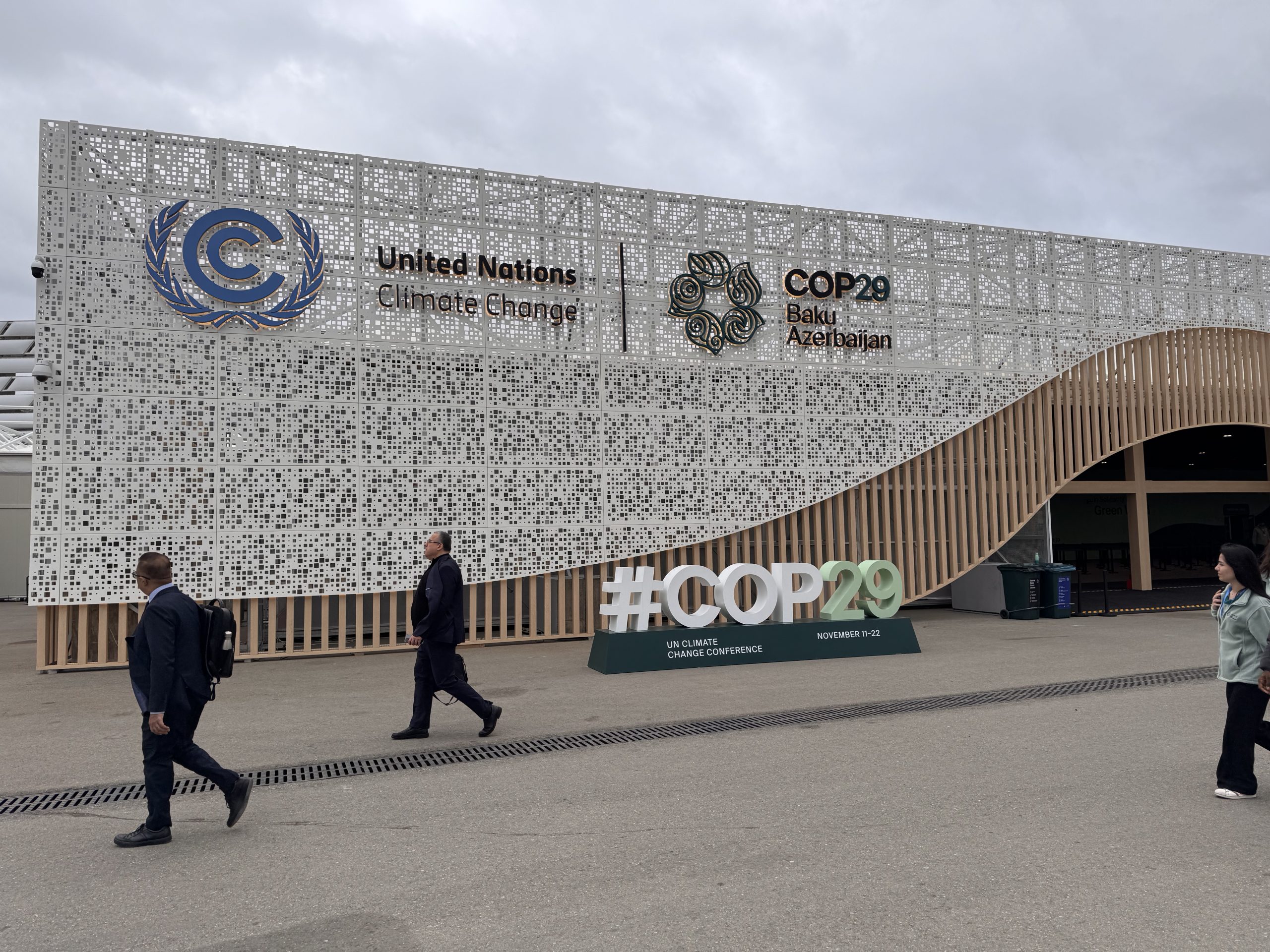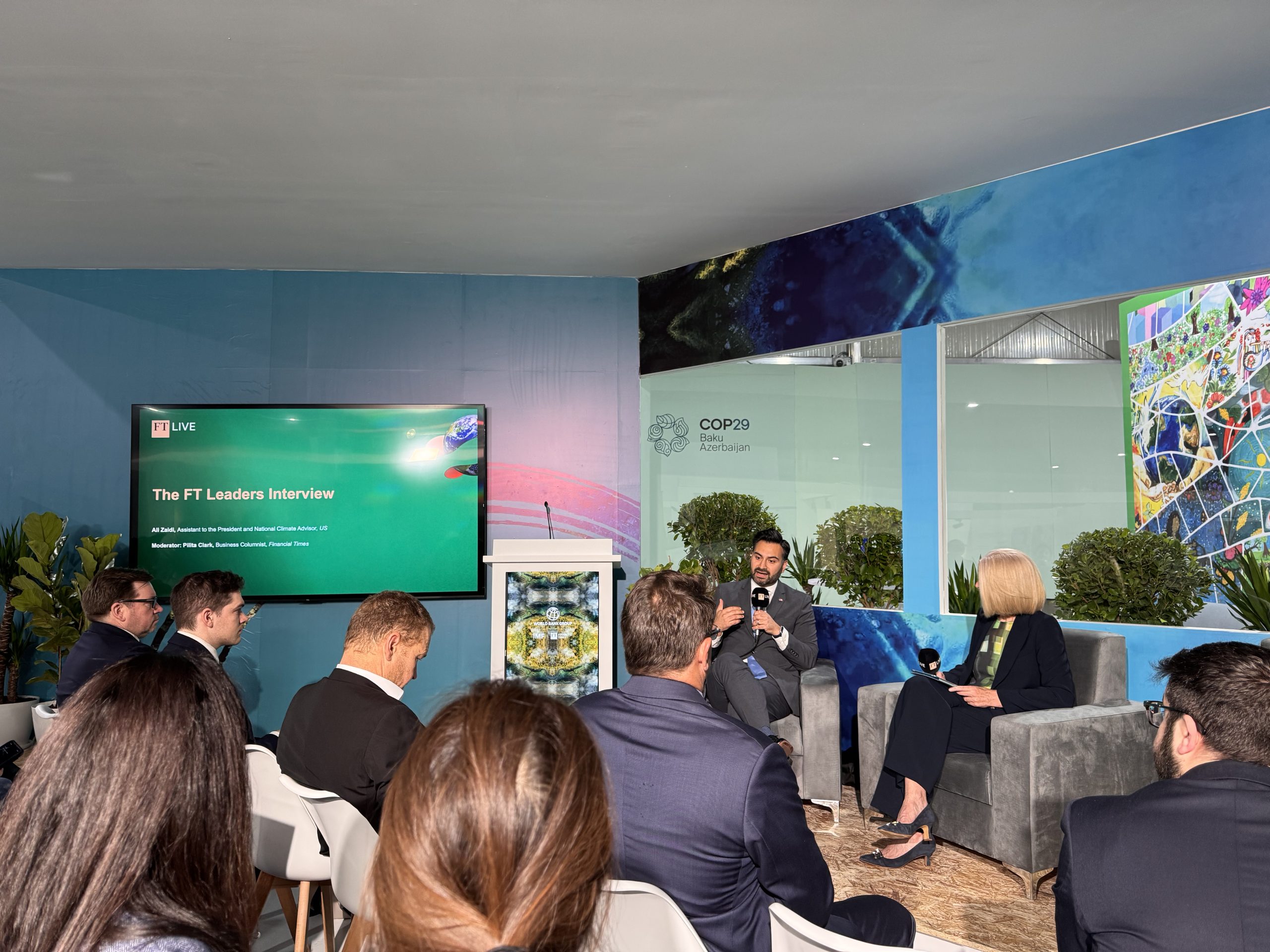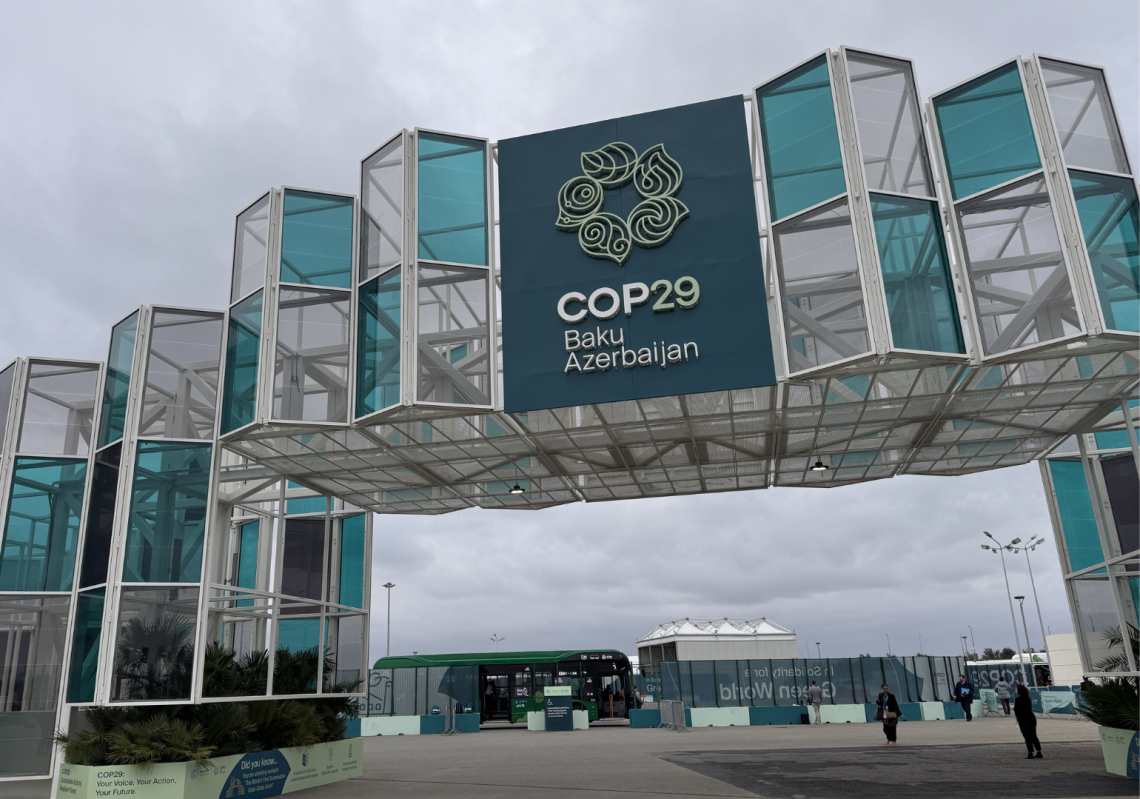Engineers Australia recently attended COP29 in Baku, Azerbaijan, reinforcing engineering’s vital role in a climate-smart future. Here are the reflections of Simon Koger, Climate Change Manager at Engineers Australia.
With conversations around government finance, political change and private-sector investment, what is being touted as the “finance COP” is off to a blistering start.
With an estimated 30,000 participants, the annual UN Climate Change Council provides a platform for stakeholders across government, industry and global society to address and strategise on ways to collaboratively address climate change.
As an official observer organisation, Engineers Australia represented the interests of engineers as the leaders in climate action.
For Engineers Australia, maintaining a presence at COP is critical. Our involvement directly supports our climate change position statement, and provides an opportunity to affirm our credibility and influence on climate-related issues.
Attending places us in a position to influence and engage in critical dialogues, helping to align our goals with both national and global climate agendas.
Engineers Australia has attended the last three COPs. This aligns with our Climate Smart Engineering initiative (CSEI) and is central to our efforts to build valuable connections, develop insights and expand the practice of engineering toward climate resilience.
Key CSEI focus areas
- Standardisation of carbon measurement and accounting
- Disaster resilience and risk management
- Training in circular economy principles
- Climate risk and management strategies
Pathways to innovation
The big question still on everyone’s lips in Baku is what role governments can play in the energy transition: player, partner or driver of progress?
The part the USA can play in light of the imminent transition to a Trump presidency has been particularly under the spotlight.
Ali Zaidi, Assistant to the President and National Climate Advisor for the United States, gave his perspective on the potential impacts on both US and global emissions reduction.
“The impact of the Inflation Reduction Act (IRA) has become too ingrained,” he said.
With the IRA delivering more than 600 factories and 330,000 jobs, the majority in Republican-controlled states, it would be very difficult to justify rolling it back.

From an international perspective, this means that, although a potential withdrawal of the USA from the UN Environment Program, the Paris Agreement and COP would be detrimental to American competitiveness, the overall direction was too strong to deny the intent.
“There is already too much physical infrastructure in place to undo it,” Zaidi said. “No one will ever dig it up and replace it.”
Financing new tech
This year’s COP has been referred to as the “finance COP”, and focused heavily on establishing a new global finance target. Member states discussed financial commitments that each country will contribute to combat climate change, with attention to how resources are allocated to both contributing and vulnerable nations. Amid geopolitical uncertainties, setting a new finance target that is both ambitious and feasible will be challenging.
But this decision will have far-reaching implications, especially for regions such as the Pacific Islands that rely on international support to build climate resilience.
Australia has a chance to cement its role as a regional leader in sustainable engineering solutions by fostering a collaborative environment for engineering innovation.
Innovation is one thing, but financing innovative tech to a commercialisation stage is proving to be a huge challenge.
To get over this hurdle, we need to tailor investment models to suit new technologies. We have the technology; now we need financial frameworks to adapt.
This includes:
- De-risking green investment through partnerships, financial and policy ecosystem alignment and social licence
- Financiers working with project developers in ways that challenge historical project development processes to build trust through knowledge sharing (even with competitors)
- Translating Nationally Determined Contributions (NDCs) into investment pathways through clear policy settings that are stable, certain and visible
Trust is the main thing. Trust in the stability of government policy, investment streams and support for innovation.
This focus fits in perfectly with Engineers Australia’s innovation focus. Looking forward, we will be focusing on innovation and commercialisation pathways within the engineering sector. The journey from theoretical research to commercialised products is a crucial element in the journey to decarbonisation and climate resilience.
Australia is uniquely positioned to contribute to the decarbonisation mission by leveraging our strengths in research and development. We are exploring how engineers can maximise these comparative advantages, particularly through global supply chain integration and value-adding activities that align with national policies.
Initiatives such as Future Made in Australia can play a pivotal role here, but they must be positioned to compete with international counterparts such as the USA Inflation Reduction Act and the European Green Deal.
At New York Climate Week, Engineers Australia hosted a panel featuring global thought leaders from Deloitte, Bezos Earth Fund and GraForce. The discussion centred on how to build sustainable funding models and support emerging engineering solutions: a theme we carry forward into COP29.

COP31: Australia and the Pacific
The themes addressed this year will resonate into the future, as Australia and the Pacific Nations work on a joint bid to host COP31 in two years.
A successful bid would reinforce Australia’s commitment to climate action and provide a platform to showcase engineering solutions that can address the unique climate challenges faced by Pacific nations. It aligns with our mission to enhance climate resilience across the Asia-Pacific and support sustainable development through engineering innovation.
Be at the forefront of critical climate change discussions at the Climate Smart Engineering Conference 2025. Contribute your insights and research by submitting your abstract before 11 February 2025.



